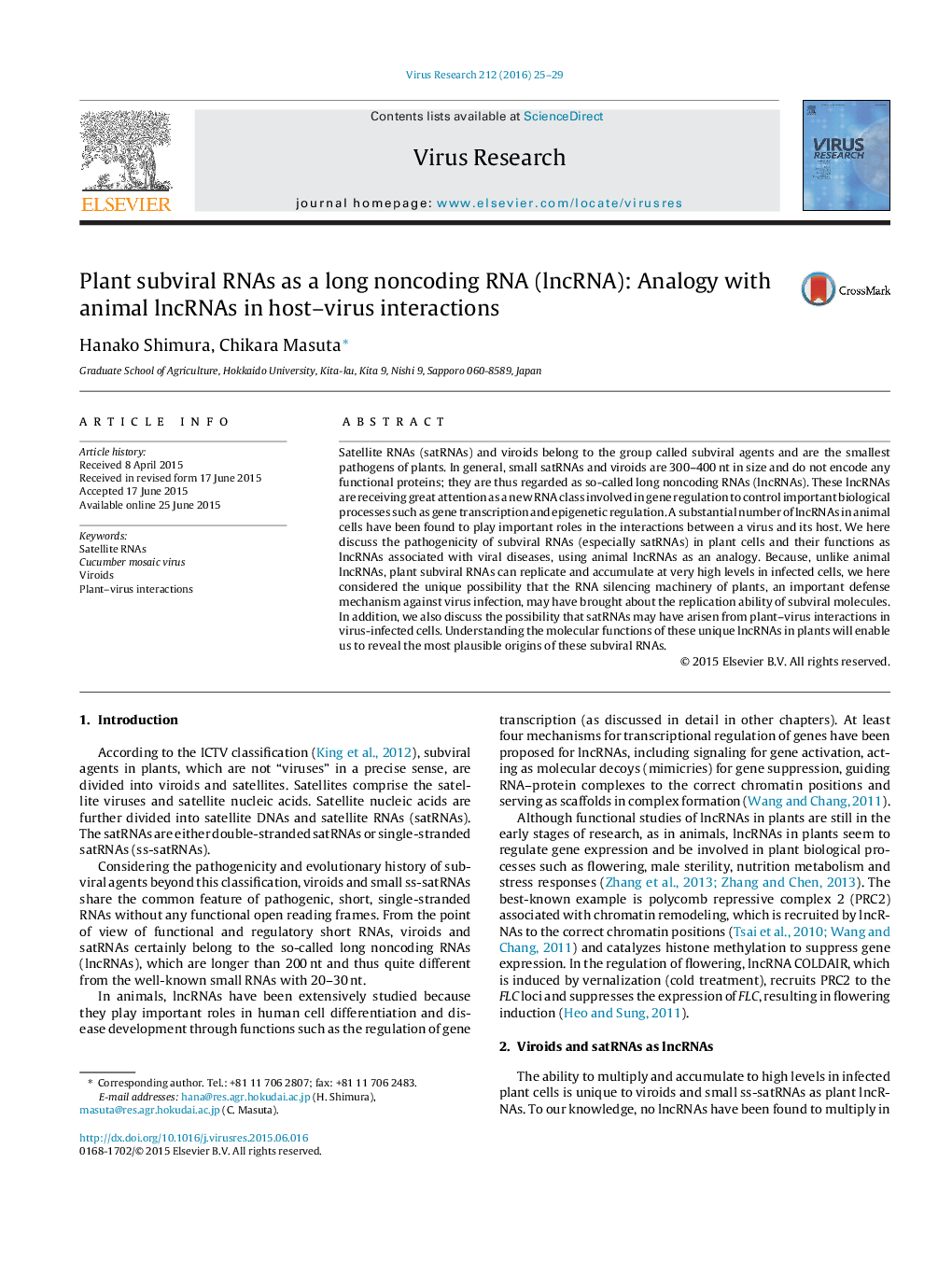| Article ID | Journal | Published Year | Pages | File Type |
|---|---|---|---|---|
| 3428091 | Virus Research | 2016 | 5 Pages |
•Plant subviral agents, satellite RNA and viroids are discussed as long noncoding RNAs in plant cells.•Satellite RNAs and viroids have some analogies to animal long noncoding RNAs involved in viral diseases.•Satellite RNAs and viroids are different from animal long noncoding RNAs in that they can replicate and accumulate in plant cells.•Possible origins of the unique long noncoding RNAs in plants are discussed.
Satellite RNAs (satRNAs) and viroids belong to the group called subviral agents and are the smallest pathogens of plants. In general, small satRNAs and viroids are 300–400 nt in size and do not encode any functional proteins; they are thus regarded as so-called long noncoding RNAs (lncRNAs). These lncRNAs are receiving great attention as a new RNA class involved in gene regulation to control important biological processes such as gene transcription and epigenetic regulation. A substantial number of lncRNAs in animal cells have been found to play important roles in the interactions between a virus and its host. We here discuss the pathogenicity of subviral RNAs (especially satRNAs) in plant cells and their functions as lncRNAs associated with viral diseases, using animal lncRNAs as an analogy. Because, unlike animal lncRNAs, plant subviral RNAs can replicate and accumulate at very high levels in infected cells, we here considered the unique possibility that the RNA silencing machinery of plants, an important defense mechanism against virus infection, may have brought about the replication ability of subviral molecules. In addition, we also discuss the possibility that satRNAs may have arisen from plant–virus interactions in virus-infected cells. Understanding the molecular functions of these unique lncRNAs in plants will enable us to reveal the most plausible origins of these subviral RNAs.
